
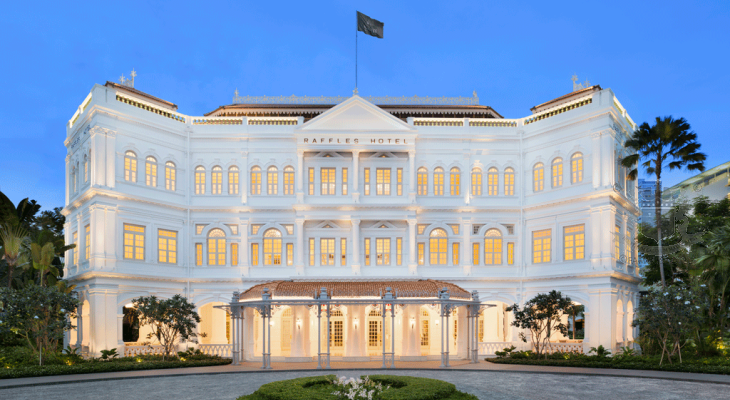
Raffles Hotel
The historic building (top, slide to the right): The "new" Raffles main building in 1899. It opened on 18 November 1899, featuring the all new Grand Marble Dining Salon to seat 500. A French chef was engaged to celebrate the opening night, the electric light and the brand new electric fans were introduced that night. The Band of the "King's Own" Regiment, by kind permission of Col. Rowlandson, played a selection of music during and after dinner. At the time Raffles was part of the Sarkies brothers' hotel group including the Crag and the E&O in Penang. Preparations were under way to open The Strand Rangoon.
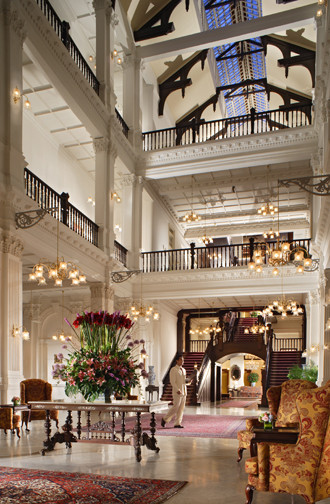
The origins of the 'Raffles' date back to the 1830s, when the 'Beach House'/'Emerson’s Hotel' was opened right by the harbour. In 1887, brothers Martin, Tigran, Aviet, and Arshak Sarkies purchased this bungalow, renovated it, and opened the 'Raffles Hotel' with ten rooms. In 1890, they expanded it with two two-storey wings containing 22 suites, and a year later with the 'Billiard Room,' built on low pedestals.
Today's lobby was originally designed as the Public Dining Room, surrounded by a Reading Room, a Bar Office and two Private Dining Rooms. Before 1989, it was named Tiffin Room – Tiffin is an Anglo-Indian word for a light lunch, predominantly curries, of course. Raffles today serves Tiffins at its restaurant, there is a world of food and beverage outlets for you to discover.
A stay at this legendary hotel is a must. It was here, in 1986, that The Most Famous Hotels in the World were founded. Together with an exclusive group of select hotels from all over the world, Raffles became a founding member.

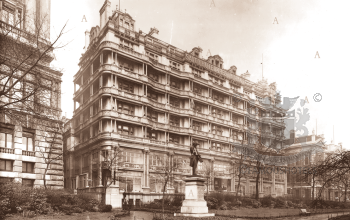
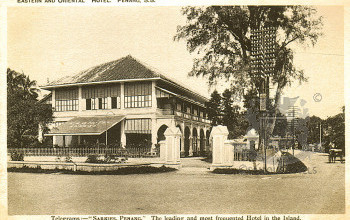
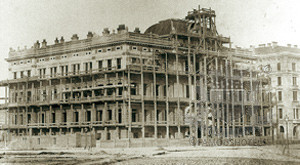

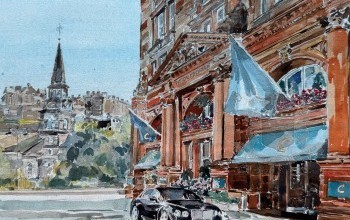
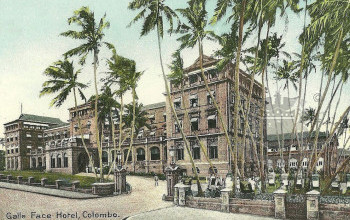

HISTORY IN BRIEF:

In 1987/88, while researching the history of the hotel for his book THE RAFFLES TREASURY, Andreas Augustin discovered the original drawings of Raffles Hotel.
The architectural drawings show the new main building as well as the first drawings of two proposed wings to the original Dare bungalow in 1889. We also find that the landowner of the property during this time was Singapore-Arabic trader Syed Mohamed bin Ahmed Al Sagoff.
With the discovery of the original drawings by Andreas Augustin, after being missing for 98 years, the way was paved to declare Raffles a National Monument in 1987.
With its restoration and re-opening in 1991, Raffles Hotel today stands as a jewel in the crown of Singapore's hospitality industry, renowned and loved for it's inimitable style and unsurpassed excellence in service and facilities.
In multi-cultural Singapore, it is not surprising that the visionary founders of Raffles Hotel were a quartet of enterprising Armenian brothers; Martin, Tigran, Aviet and Arshak Sarkies.
Raffles Hotel opened in 1887 in a rather somber-looking old bungalow known as Beach House. It was named after Sir Stamford Raffles, founder of modern Singapore. Topical suits and solar topi were as much a part of Raffles Hotel's early style as bentwood tables and rattan chairs. Over the years, the hotel has evolved into one of the world’s most beloved Grande Hotels and welcomed innumerable celebrities, writers, and royalty.
HISTORY IN DETAIL: Singapore is called Singa Pura because - as legend has it - a prince, Nila Utama, landed on the island between 700 and 1.300 AD. Shortly after his arrival he saw an animal. Under the impression that this beast was a lion he called the place Singa Pura (Singa Pura = Lion City). This legend seems to be floored by a less romantic theory: Singgah means stopover and Pura stands for city. 1819, February 6th: Sir Thomas Stamford Bingley Raffles signed the treaty with the new Sultan of Johore to establish a trading post in Singapore for the British East India Company. His free trading policy attracts entrepreneurial talent from all over Asia. Within months the establishment of Singapore proved to be a real success. Thousands of Chinese, Babas (Straits Chinese from Malacca or Penang), Indians, Malays or European, fascinated by the prospect of free trade, moved to the newly established port. By June, the island had a population of more than 5.000. 1822: Raffles installed a committee that drew the basic plans for a controlled development of Singapore. 1823: Great Britain put Singapore under control of the govenor-general of India and appointed a new resident, John Crawfurd. Raffles himself, who felt his failing health, left Singapore. He died one year later in England at the age of 45. 1826: Singapore merged with the British colonies Penang and Malacca to form the Straits Settlements.
1850s: At least 300 people a year were gobbled up by tigers. The fovernment allowed free shooting and offered rewards from $50 to $ 250 for every tiger. Thirty years earlier William Farquhar had to offer ten dollars for every rat killed.
1867: Together with the island of Penang and the city-state of Malacca in Malaya, Singapore became a full British colony under the name Straits Settlements. administered from London.
1869 The Suez Canal opened and shipping traffic to Singapore increased. The total turnover in the colony rose from £58 million to £90 million between 1868 and 1873.
The Sarkies brothers: Tigran, Arshak, Martin and Aviet (from left)
1886: The Armenian Sarkies brothers took over the manison of Captain George Julius Dare in Singapore´s prestigious "Twenty - House Street" (Beach Road).
The property, facing the harbour, belonged to the Arabian trader Syed Mohammed Bin Ahmed Al Sagoff.
1887: The Sarkies transformed the house, which operated as a Tiffin Room, into a small hostelry and opened with 20 rooms only under the name Raffles Hotel on 1 December.
1899: The elegant Raffles Hotel main-building with a total of 102 rooms was created. It was the first hotel in the Straits Settlements lighted with electricity and cooled by electric fans! The Sarkies brothers managed the hotel under a lease from Syed Mohamed Alsagoff.
1902: A tiger was shot under the billiard room annex at Raffles Hotel. The new wing of the hotel facing Bras Basah Road was completed.

1910: The Palm Court is extended to its present size. The Sarkies add a large ballroom in front ot the hotel, reaching into Beach Road (demolished during the 1989-91 renovations).
1911: The population of Singapore passed 250.000 combining 48 races speaking 54 languages.
1915: Barman Ngiam Tong Boon created the Singapore Sling, a fine concoction, made of Gin and seven other things. 1917: Tigran Sarkies retired. The same year, the Russian revolution sent talented musicians across the steppes and tundras of Siberia. They came through Shanghai to South East Asia. Some of them eventually played at Raffles. They struck new and definitley not Russian tunes in the largest ballroom of the East: JAZZ!
1923: The Sarkies bought Singapore's Sea View Hotel (demolished in the 1960s). Aviet Sarkies died. 1926: Jazz musician, Joe Speelman, introduced a new "movement" to Singapore. Some people called it dancing and it was first performed at Raffles: Charleston.
1929-1931: The Malayan rubber slump combined with the world´s great depression made hotel operations difficult. At the same time, Arshak Sarkies embarked on extravagant renovations.
1931: Arshak died at the E&O Hotel in Penang. His partner, M.S. Arathoon, faced bankruptcy and the Sarkies hotels including Raffles, went into receivership.
1933: A new public company, Raffles Hotel Ltd., was incorporated. Swiss Teddy Troller became the first professional Manager at Raffles. 1934: Raffles major rival the Grand Hotel de l´Europe, closed. Raffles now became the unimpeachable number one in the colony. After further renovations the hotel had 120 rooms.
1937: Singapore´s Kallang Airport opened as one of the most modern airports in the world. In the same year the march of the "Rising Sun" continued. After capturing Manchuria six years earlier, Japan invaded China.
1938: Singapore appeared well protected with new installed heavy artillery, new airfields and stron anti aircraft defences. The colony was called "Gibraltar of the East". The defence was mainly orientated towards the sea in the south.
1941: The pride of the Navy, the Prince of Wales and the Repulse, anchored at the piers of Singapore. The Lion City was - in the mind of her inhabitants - invincible. Despite this, a silent evacuation of women and children started in view of the Japanese marching down the Malayan peninsula. Ships brought troops from Australia and New Zealand and took back women and children. 1941, December 8th: Japanese attacked Pearl Harbour. At the same time they launched their first air raids on Singapore. December 10th: Shocking news reached the colony: the battles ships Prince of Wales and Repulse were sunk off the shore of Malaysia by Japanese torpedo bombers.
1942, February 8th: British colonials made a last stand at Raffles. "There will always be an England" echoed through the hotel and dancing continued until the small hours. Raffles staff buried the precious hotel silver including the famous silver beef trolley in the Palm Court. At the same time Japanese troops invaded Singapore from the north using collapsing boats.
1942, February 13th: The Govenor, Sir Shenton Thomas, ordered the destruction of all stocks of liquors on the island. The "Hong Kong experience" had shown that Japanese are much more gentle without alcohol.
1942-1945: After Singapore´s unconditional surrender, her clocks were synchronized to match Tokyo time for three ling years. This period brought the horror of war to Singapore. Many were killed, others were intered at Changi prison or sent north to erect the "death railway" from Thailand to Burma. The Japanese renamed Singapore "Syonan". Raffles Hotel became Syonan Ryokan, the Light of the South Hotel. It was appointed as a quarter for senior Japanes officers. During the occupation the main entrance was moved from the corner of Beach Road/Bras Basah Road to an other corner, facing the sunrise in the east.
1945, August 21st: The Japanese surrendered to allied forces and formally returned the island to Admiral Lord Louis Mountbatten a week later. According to our research one Japanese officer committed suicide (hara-kiri) in one of the rooms in the Bras Basah complex, leaving a note that the staff is not to blame for his death. On 4 September the Japanese vacated the hotel. Now the hotel silver was unearthed and M.S. Arathoon reopened Raffles, which became the temporary transit camp for released prisoners-of-war under the interim British Military Administration.
1950: Air-conditioning was installed at Raffles.
1952: Indonesian-Dutch Frans Schutzman became Raffles´Manager.
1953: In celebration of the coronation of Queen Elizabeth II, the hotels´s Elizabethan Grill was opened. The Palm Court, where Somerset Maugham used to sit and work every day.
1963: Singapore merged with Malaya, Sabah and Srawak to form the Federation of Malaysia. 1965: Singapore severed itself from the federation and became a sovereign, independent and democratic nation in its own right, immediately accepted as the 117th member of the United Nations.
1970: The swimming pool was constructed in the Palm Court.
1972: Roberto Pregarz took over as Manager from Briton Charles Dorkins.
1970s: Singapore developed enormously. It became the financial and trading centre of South East Asia. At the end of this decade, the per capita Gross National Product reached 10.800 Singapore dollars, second in Asia only to Japan.
1986: launch of RAFFLES HOTEL SINGAPUR, the History of Raffles hotel, by Andreas Augustin. See books about Raffles.
1987: The research for Andreas Augustin's book THE RAFFLES TREASURY lead to the startling discovery of the original drawings of the Raffles Hotel. Upon presentation of these drawings Raffles became a "Historical Landmark of Singapore"
1988: In June, Noel Barber´s "Tanamera" was filmed at Raffles. Julie Soong and her lover John Dexter had one of their forbidden rendezvous. Over 50 extras where acting, and through the Palm Court echoed once again "There will always be an England!"
1989: Raffles closed for renovation.
Raffles faced S$ 50 million renovations. Being a "Historical Landmark", protected by the Singapore Monument Preservation Board, the hotel returned to its former grandeur. With the aid of modern techniques, based on the historical architectural drawings, she is turned into a luxurious jewel.
1991: Raffles reopens, a deluxe hotel with en-suite shopping arcades, theatre, museum, spa, etc.
For the first time in its history, a native Singaporean, Mrs Jennie Chua, is at the helm of the hotel as general manager (until 2003).
2020: Raffles underwent new renovations and faceliftings.
The Corona pandemic strikes.
2021: Raffles has regained its role as the official hotel of Singapore. It is in fact the only surviving 19th century luxury hotel of the country.
A Selection of Raffles´Patrons President B.H. Sheares Prime Minister Lee Kuan Yew Prime Minister James Callaghan H.E. Pandit Nehru of India Lord Mountbatten of Burma Robert Kennedy of USA H.M. Haille Selassie of Ethiopia H.E. Duff Copper of UK President Saragat of Italy Prime Minister Sato of Japan H.E. Kang Kyang Wook of North Korea H.E. Adam Malik of Indonesia H.E. Walter Scheel of West Germany Prime Minister Fanfani of Italy H.E. Mirko Tepaval of Yugoslavia H.E. Kiichi Aichi of Japan Prime Minister Fraser of Australia Prime Minister Pierre Trudeau of Canada H.R.H. Princess Soraya H.E. Singh of India H.E. D.S. Thomson of New Zealand H.E. Dr. Bruno Kreisky of Austria H.E. Milton Obote of Uganda H.E. G.P. Schultz of USA Elizabeth Gillet, Lady Mayoress of London H.E. Gaetano Stammati of Italy President Zia of Bangladesh H.R.H. Princess Sonja of Norway Dr. Henry Kissinger of USA H.E. Dr. McGuigan of Canada H.E. Mr. John Patrick Hillery of Ireland Prince Rainier of Monte Carlo H.E. Valerie Giscard D‚Estaing Mrs Alice Vestergaard of Denmark H.R.H. Sultan Ismail Petra, Kelantan Dato David Marshall Foreign Minister Wu Xie Hing of China, Duke and Dutchess of Cambridge ( William and Kate, 2012), Queen Elisabeth II and Duke of Edinborough Prince Philip (2006),
RAFFLES´FAMOUS ARTISTS
Michael Jackson, Helmuth M. Backhaus Noel Barber Wolfgang Bauer, Dennis Bloodworth Leslie Charteries Kelly Chopard Joseph Conrad Leopold de Coutere Robert Elegant Raymond Flower Russell Foreman William Golding Richard Gordon Günter Grass Arthur Hailey Hermann Hesse Maxime Hong Kingston Rudyard Kipling Bodo Kirchhoff Marilyn & Wayne Levy Andre Malreaux Somerset Maugham James A. Michener Pierre Schoendorfer Ilsa Sharp, Andreas Augustin, Harold Stephens, Walter Vogl, Gavin Young, Ah Meng Giulano Balestra Harry Belafonte Ingrid Bergman Bernardo Bertolucci Peter Bogdanovich Daniel Boorstin Björn Borg David Bowie Bruce Boxleitner Marlon Brando Frank Buck Richard Burton Claudia Cardinale Richard Chamberlain Charlie Chaplin Francis Chichester Johnny Costello Xavier Cugat Douglas Fairbanks Milos Foreman Morten Frost Anna Galina Ava Gardner Ben Gazzara Peter Graves Bernhard Hailstone Rolf Harris Ted Heath Jim Henson Alfred Hitchcock William Holden Trevor Howard Grace Kelly Kermit the Frog Abbe Lane Jack Lord Hayley Mills Derek Nimmo Mary Pickford Alberto Pomersi Otto Preminger Ginger Rogers Edmund de Rothschild Linda Scott Jean Simmons Elizabeth Taylor Mike Todd John Wayne Orson Wells Billy de Williams William Wyler
Raffles has its own in-house historian. Former receptionist Leslie Danker has taken on the role of a walking storyteller, who takes guests on inspiring house tours.
YOU SHOULD KNOW, THAT ...
* Beach Road, where Raffles is located, was known as Twenty House Street in the early days of Singapore.
* Raffles had a panoramic seaview until 1889. Land reclamation finally robbed her of her place beside the shore. Today she is about 500 meters away from the water.
* when reopened on 18th November 1899, after extensive expansion, Raffles had the largest dining room in the East with 700 square metres, saeting 500. Part of it makes up today´s Lobby and Tiffin Room.
* after this renovation Raffles was the first hotel in the Straits Settlements to have electricity. Her own generator was capable of illuminating 800 bulbs and also operated the ceilling fans in all public rooms.
* in an editorial in 1905, the london Spere described Raffles as "The Savoy of the East".
* Raffles´famous Longbar had its first barmaid in 1900. She was Austrian born Ethel Berta Nissen.
* Raffles was the first to have her own telegraph office, a post office and telephones in every guest-room.
* a Japanese guide book published in 1926 decribed Raffles as "famous for her steaks and icecream".
* no Asians, or even Eurasians, for that matter, were allowed as guests at Raffles until the 1930s
* in the hundred years of Raffles´history, there has been but one British manager in one of the most British populated hotels in the world. Charles Dorkins was Manager at the hotel for two years in the 1970s. All other managers of the hotel have been Armenian, Swiss, German, Italian and most recently Asian.
* few guests realize that the present Billiard Room still houses one of the four original billiard tables and a scoreboard bought for the very first Billiard Hall of Raffles.
* in the middle of Raffles´Palm Court stood during the 1980s a lonely stairway. Nobody quite knows the reason for it, or where its stairs may lead, and althought that remains a mystery, the origin of the staircase is clear. It was saved from the demolished Jubilee Theatre, which once stood behind Raffles.
Plants in the Palm Court
The Palm Court always was a source of inspiration for many, including the likes of Somerset Maugham, who would sit every morning under the shade of the Frangipani to write. The luxuriant growth of plants and trees helped create an atmosphere not dissimilar to an imaginary paradise. Varieties of orchids command an outstanding position in the garden, their delicate beauty belying the true resilience of the flower. The Travellers Palm seemed particularly appropriate in this South East Asian region, especially at Raffles. Bougainvillaea: The flowers of this popular Singapore plant come in orange, pink, red and white. Frangipani: This tree has wonderfully fragrant flowers and is prominent throughout the Palm Court. The Mussaenda Dona Luz is mentioned by André Malreaux in one of his books.
Tanamera (1988)
Until the 1930s the hotel was managed by various managers, and supervised by the Sarkies family.
Names are provided where we have them. Information and additions are welcome aa@famoushotels.org
__________
Guido Cevenini (assisted by Nino and Ernest Smith)
Franz Schutzmann (1952)
Charles Dorkins
Roberto Pregarz (1967-15.3.1989)
Jennie Chua (1991-2003)
Javier Rosenberg (2004-04 2005)
Robert Rogen
Pierre Jochem (–2013)
Robert Woltering (interimistic) 2016/17
Christian Westbeld
103 Suites
Tiffin Room, Writers Bar, Raffles Grill, Bar and Billard room, Long Bar, Pool Bar
24h Health Club, 24h outdoor swimming pool